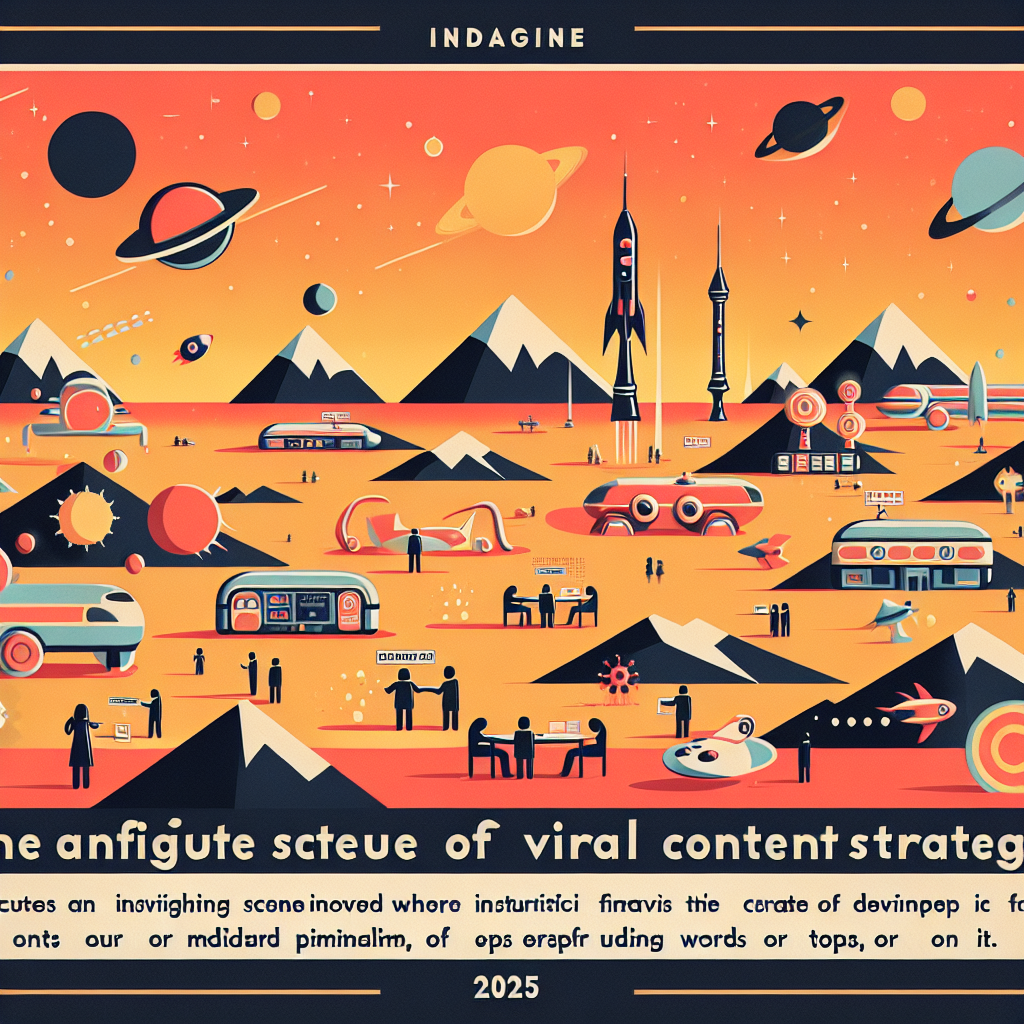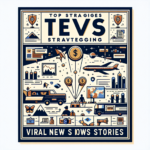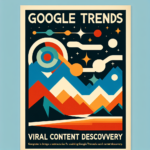Welcome to the Future of Digital Marketing
Ever wondered what the digital marketing landscape will look like in 2025? You’re not alone. With rapid technological advancements, changing consumer behaviors, and the constant evolution of strategies, predicting the future of digital marketing can be quite a daunting task. But don’t worry, we’ve got you covered!
In this blog post, we’ll address seven key trends that will shape content strategy in 2025 – from the creation of human-centric content and leveraging advanced technologies to focusing on data privacy. We will discuss why these trends are important and how you as a marketer can prepare for these changes.
We also explore viral marketing strategies, how they work, their elements, and how to use them effectively for your brand. Plus, we’ll share the steps to create a viral content strategy.
Ready to explore the future with us? Let’s get started!
Content Strategy in 2025: Adapting to the Digital Marketing Landscape
Emphasizing Human-Centric Content
In 2025, content strategy will center around creating authentic, human-centric content. This means:
- Building narratives that resonate on an emotional level.
- Focusing on authentic storytelling rather than hard selling.
- Cultivating trust through transparency and real customer experiences.
Personalization will be more essential than ever, with brands tailoring content to individual user preferences and behaviors.
Leveraging Advanced Technology
Advanced technologies will play a key role, assisting marketers in content creation and distribution:
- AI and Machine Learning: Utilize these technologies for predictive analytics and personalized content delivery.
- Virtual and Augmented Reality: Create immersive experiences that engage users in unique ways.
- Voice Search Optimization: Adapt content to optimize searchability with voice-activated devices.
These tools streamline the content creation process and provide new ways to engage audiences.
Adapting to Platform-Specific Content
Different platforms demand unique content strategies that cater to distinct user behaviors and expectations:
| Platform | Content Type | Key Consideration |
|---|---|---|
| Visual Stories and Reels | Engage with addictive, short-form video content. | |
| YouTube | Long-form Videos | Inform and entertain with detailed video guides. |
| Professional Insights | Share valuable content that enhances professional growth. |
Crafting exclusive content for each platform maximizes reach and engagement statistics.
Emphasizing Community Building
Creating a community around your brand will be a cornerstone of content strategies in 2025:
- Nurture a sense of belonging, fostering a dedicated community.
- Engage audiences with interactive content such as polls and quizzes.
- Utilize platforms like Discord or community-driven forums to enhance connection.
Brands will benefit from the collective power of community advocacy.
Focusing on Data Privacy
As the digital landscape shifts, data privacy remains a top priority:
- Ensure content adheres to privacy laws such as GDPR and CCPA.
- Communicate how customer data is collected, stored, and used.
- Implement transparent consent management practices.
By prioritizing data privacy, brands build trust with their audience, reducing potential legal risks.
Sourcing Authentic Voices
Aligning with influential voices can expand reach and credibility:
- Collaborate with micro-influencers to tap into niche audiences.
- Leverage user-generated content to showcase real customer experiences.
- Position internal experts to enhance authenticity through specialized content.
This approach ensures that your brand remains relatable and engaging, encouraging higher interaction rates.
For more in-depth insights on how these strategies are developing, you may visit Forbes.
Exploring Viral Strategy in Digital Marketing
Defining Viral Strategy
A viral strategy, at its core, is about creating content or campaigns that rapidly catch on and spread through various digital platforms. It operates on the principle of ‘word-of-mouth’ but on digital platforms, leading to exponential growth in reach and engagement. The goal here is to create compelling content or campaigns that people enthusiastically share within their networks, driving brand recognition and engagement.
Elements of A Successful Viral Strategy
Several key elements contribute towards a successful viral strategy:
- Highly Shareable Content: The content must be unique, relatable, and emotionally engaging to compel people to share.
- Utilizing Influencer Networks: Partnering with influencers can quickly extend the reach of your content.
- User Participation: Encouraging users to participate and share content significantly extends the content’s reach.
Successful Viral Strategies and What They Share
No viral strategy is the same, each requiring careful planning and strategic implementation. However, successful strategies often share common elements.
| Successful Viral Strategy | Key Elements | Outcome |
|---|---|---|
| ALS Ice Bucket Challenge | Cause-related, emotionally engaging, user participation | Increased awareness and donation for ALS |
| Dove’s Real Beauty Campaign | Emotionally charged content, social issue awareness | Positive brand perception, increased discussion around the topic |
| Apple’s ‘Shot on iPhone’ Campaign | User-generated content, influencer engagement | Boosted product credibility, enhanced customer loyalty |
Risks and Challenges in Implementing a Viral Strategy
While the potential benefits of a viral strategy are enormous, there are risks and challenges:
- Lack of control over content distribution and message interpretation.
- Short-lived success if not strategically planned and executed.
- The potential for negative virality if the content is controversial or misinterpreted.
While a viral strategy can be hard to predict and control, a well-executed plan has the potential to drive substantial business results. Navigating these challenges requires sensitivity, awareness, and strategic planning.
Conclusion
In conclusion, a viral marketing strategy can be a powerful tool for increasing brand visibility and user engagement when carefully strategized and executed. However, its unpredictable nature means it should be one part of a diversified marketing approach.
For more insights on successful viral strategies, visit BBC.
Steps to Create a Viral Content Strategy
Crafting a viral content strategy involves systematic planning and execution. Understanding these steps can significantly enhance the chances of content going viral.
Step 1: Identify Your Target Audience
Understanding your audience is essential. Tailor content to their interests, behaviors, and preferences. Use analytics tools to gather insights about demographics, interests, and online behaviors.
- Utilize tools like Google Analytics and Facebook Insights.
- Conduct market research to understand audience needs.
Step 2: Establish Clear Goals
Define what you want to achieve with your viral campaign. Is it brand awareness, lead generation, or sales?
- Set Specific, Measurable, Achievable, Relevant, Time-bound (SMART) goals.
- Link each piece of content to your overall marketing objectives.
Step 3: Create Relatable and Engaging Content
Content must resonate emotionally with your audience. It should be catchy, unique, and provide value.
- Use storytelling to make content relatable.
- Incorporate a mix of emotions – humor, surprise, and inspiration work well.
Step 4: Optimize for Sharing
Facilitate easy sharing across platforms to enhance reach.
- Include social sharing buttons prominently on your content.
- Craft engaging headlines that compel users to click and share.
Step 5: Leverage Influencers
Influencers can significantly amplify your message’s reach.
- Identify influencers relevant to your industry or niche.
- Build authentic relationships to promote your content organically.
Step 6: Choose the Right Timing and Platform
Timing and choice of platform can make or break your content’s viral potential.
- Research the best times to post based on when your audience is most active.
- Select platforms where your target audience is most present and engaged.
Step 7: Monitor and Adapt
Consistent monitoring and adaptation are key.
- Use analytics tools to track performance and gather insights.
- Be prepared to pivot strategies based on real-time data and feedback.
For more information on viral content and how it’s evolving in digital marketing, you may read an article from Social Media Today.
The Future of Marketing in 2025: Emerging Trends and Technologies
Integrating AI-Driven Insights
In 2025, artificial intelligence (AI) will further integrate into marketing strategies, enabling more intelligent decision-making processes. AI will not only aid in data analysis but will also play a role in automating marketing tasks, personalizing customer experiences in real-time, and predicting future consumer behaviors based on past interactions. This level of insight will allow marketers to stay ahead by anticipating customer needs even before they voice them.
The Rise of Ethical Marketing Practices
As consumers become more socially conscious, ethical marketing will take center stage. Transparency in operations, sustainable business practices, and strong corporate social responsibility will not just be advantageous but essential for brands to resonate with their audience. Companies that demonstrate their commitment to the environment, fair trade, and equity will likely earn consumer trust and loyalty.
Expansion of Hyper-Personalization
Hyper-personalization will transcend traditional marketing practices. Advanced analytics and machine learning will allow brands to tailor not just the content but the entire customer journey on an individual level. From personalized product recommendations to custom-tailored promotions based on purchase history and browsing behavior, hyper-personalization will create more meaningful engagement and higher conversion rates.
Integration of Blockchain in Advertising
Blockchain technology is poised to revolutionize advertising by introducing transparency in ad placements and ensuring the authenticity of online interactions. This technology will help combat ad fraud and provide clear tracking of where and how digital ads are being consumed. Blockchain’s ledger system can also securely handle user data, giving consumers more control over their personal information.
The Importance of Cultural Intelligence
In a globalized world, cultural intelligence will become a critical part of marketing. Understanding diverse markets, including cultural norms and values, will be essential for creating campaigns that resonate globally while appealing locally. Marketers will need to adopt a multicultural competence to authentically connect with varied audiences.
Implementing Seamless Omnichannel Experiments
Omnichannel strategies will become even more seamless in 2025. Consumers will expect a unified experience across all touchpoints, from physical stores to digital platforms. Retailers will need to create cohesive interactions that allow customers to transition smoothly between different channels, enhancing the overall user experience and increasing retention.
Role of Shoppable Media in Consumer Journeys
Shoppable media will continue to grow in importance, transforming content into direct shopping avenues. Integrating payment options directly into social media platforms, videos, and even AR experiences will shorten the customer journey and increase impulse purchases. The convenience of buying directly from ads or within content will reshape the path-to-purchase landscape.
For more details on these insights and how they are shaping the future of marketing, check out this informative article from Forbes.
Concluding Vision: Content Strategy in 2025
The key to successful content strategy in 2025 lies in human-centric content, leveraging advanced technology, platform-specific adaptation, community building, and keen focus on data privacy. Brands need to engage with the audience on a deeper, more personal level while using tools like AI and Machine Learning to amplify reach and personalization. The authenticity of the content and its sources, along with clear privacy practices, will build trust among consumers. Crafting exclusive content based on particular platform dynamics will lead to improved reach and engagement, elevating the overall user experience.
Frequently Asked Questions – FAQs
What will content strategy in 2025 be centered around?
Content strategy will be centered around creating authentic, human-centric content. Brands will focus on building narratives and storytelling that resonate emotionally with their audience. The key to effective content strategy will be personalizing content based on individual user preferences and behaviors.
What role will technology play in future content strategy?
Advanced technologies like AI and Machine Learning will play a key role in content creation and distribution. These tools provide predictive analytics, enable personalized content delivery, and assist with voice search optimization. Virtual and Augmented Reality tools can be used to create immersive, engaging experiences for users.
How will community building be emphasized in content strategy?
Brands will prioritize creating a sense of belonging and fostering dedicated communities. Interactive content such as polls and quizzes will be used to engage audiences, and platforms like Discord or community-driven forums will be utilized to enhance connection.
Why is data privacy important in content strategy?
Data privacy remains a key element as the digital landscape evolves. Brands need to ensure that their content adheres to privacy laws and they should clearly communicate how customer data is being collected, stored, and used. Implementing transparent consent management practices is also essential to building trust with the audience and reducing potential legal risks.






